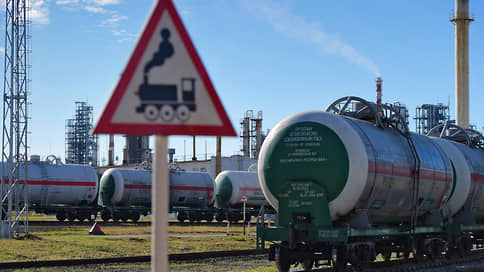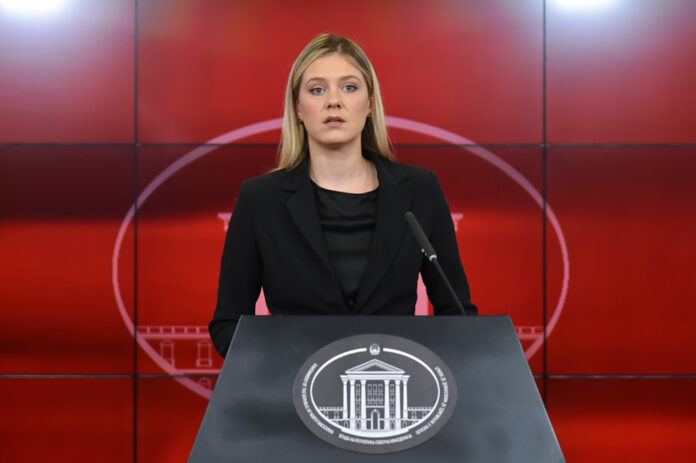How the US Tariff War will affect the world and Russian economies

The prospects of world trade and the influence of the “tariff demarche” of the US President Donald Trump on them will critically depend on the purpose of the United States itself – whether Washington plans to leave the World Trade Organization or forced it to reforms blocked in recent years, notes in a column for “Kommersant” the Council of Expertise on the WTO, and earlier the main negotiation of the Russian Federation by the Russian Federation trading organization Maxim Medvedkov.
Having decided to introduce additional duties, the United States not only grossly violated its obligations on the WTO. They demonstrated that they do not consider themselves related norms of international trade law. And they do not intend to use the procedures provided for by the organization’s agreements specifically for cases of forced increase in imported tariffs. This is an important element of the whole story with Trump’s tariffs, which few have paid attention to, but it has a fundamental importance for the future development of trade relations with the participation of the United States: either Washington will return to the rules or continue the “trade life” according to concepts. The prospects for US participation in the WTO themselves depend on this.
The World Trade Organization has two coercive tools for fulfilling obligations. One is moral pressure. It acts well with minor sins of not the largest countries, but it is unlikely to be embarrassed by experienced diplomats of one of the largest economies in the world. The second is a permit for response measures. According to the rules, it is given only after the dispute is completed, the defendant is recognized as the violator and the amount of damage caused to the plaintiff is determined. In the framework of compensation for this damage, the plaintiff may introduce response, for example, increase duties. It takes one and a half to two years. But at present, the implementation of this scenario is impossible – the United States has long blocked the work of the WTO appeal body, so there will be no permission. And this means that any response measures taken by the injured countries against the United States will also be illegitimate from the point of view of the WTO, which is simply not designed for current perturbations.
The WTO cannot just take and drive the United States out of its ranks. However, there are various alternative scenarios that will allow you to preserve all the necessary functions of a multilateral trading system for all countries except the United States. They are not obvious from a legal point of view, but in principle are not excluded.
Many would breathe a sigh of relief if the United States would decide to leave the WTO – in recent years, the country not only stopped playing the role of a leader in the organization, but also blocked a number of functions and processes, including resolution of disputes.
On the other hand, the United States, it seems, are not going to “go out” themselves, and many of their proposals for the organization’s reform are very interesting. For example, the United States proposed linking the volume of preferences for developing countries with the level of their economic development, realizing that many users of these preferences have already become leaders of the world economy. They developed a system for increasing the discipline of members of the organization, in particular, in issues of regular notifications on trade and economic policy, state support and other forms of regulation. These notifications are used to control the fulfillment of obligations, and many simply delay their preparation. The United States proposed not to give words to representatives of such debtor countries at meetings and increase their volume of contributions to the WTO, which caused a storm of misunderstanding from the world bureaucracy. Failures in these areas of the WTO reform pushed the United States to radical solutions – and tariff escalation probably also became the result of these failures.
The threat of the WTO without the United States will obviously be an essential pressure tool. One way or another, the United States remain an important participant in the multilateral system, more than 40% of their income of their corporations comes from abroad, and complete loss of management of these processes is unlikely to meet their strategic plans. However, the formation and implementation of such a plan requires unanimity among members of the organization and the serious coordination of their efforts and politics. Finally, the WTO needs a new leader who could spend everyone with new victories, but he was not in the organization. The EU is not suitable for this role, China is not ready, and to distribute the functions of the leader between the group of « Friends of the System » is inefficient.
The main options for tariff settlement will most likely be associated with agreements on mutual concessions. Small economies depending on US markets will probably be able to offer “right” concessions. For example, Switzerland and so does not use imported tariffs for industrial goods, and Singapore does not have them either.
Non -tariff restrictions are usually simple to modernize, especially if their task is not related to hidden protectionism.
Large economies, such as the EU or Japan, may be forced to first introduce response measures to demonstrate their readiness to damage the United States and only then start negotiations on settlement and try to agree. Such a sequence of actions can be caused by desire to first scare the bans and restrictions of American business, to attract it and, most importantly, its lobbying opportunities to its side. And only then, when this business is already losing money, start work on compromises.
This classic of trade negotiations will work this time, if the main goal of Trump tariff initiatives is to improve the conditions for accessing their companies to foreign markets. And if the goal is different – for example, the launch of a large -scale global economic crisis (some experts believe that this is the only way to eliminate the giant US deficit in trade) – then the script may be different. Then Trump’s tariffs will continue to work for a long time, and compromises with the main suppliers will not be achieved.
In this scenario there is a high probability of increasing economic problems for many, if not for all participants in international trade. According to some estimates, the US tariff measures and the response measures of their trading partners will lead to a drop in world GDP by 0.3-0.5%, the gap of value added chains will cause an increase in competition in the markets of third countries, and the United States itself will reduce imports by almost a third – with the relevant problems for consumers and the development of inflation processes.
At the same time, investments in the US economy may increase – the figure of $ 3 trillion of new captures was recently called. Raising the tariffs, Trump, perhaps, implements the well -known policy of import substitution, with all its pluses and minuses.
Russia does not directly depend on Trump’s tariff initiatives, since our trade has been reduced due to sanctions, and no new duties have yet been invented for Russia. Nevertheless, the Russian economy may also face challenges.
International trade underlying it is the basis of production chains are similar to a system of rivers and streams, along which goods move in different directions. The tariff dam, which is erected by the US President and to which the response measures of his injured partners will be added will immediately lead to jams, floods and overflows. The goods intended for the United States will go in other areas, most likely at any prices, just to sell. Other markets, other economies will be attacked. The conditions for the sale of Russian goods in these markets will deteriorate as the economic situation worsens there – demand will be reduced to our export goods, especially oil, gas, metals used in production.
On the other hand, the supply of third countries to Russia may increase, that is, imports competing with domestic suppliers. Probably not the biggest misfortune if more Harley-Davidson or the American bourbon is brought to Russia, the procurement of which the European Union plans to abandon. Consumers will be happy, and there are few domestic competing manufacturers. But if cars, metals or chemistry begin to come to us in increasing volumes – problems may be significant.
The likelihood of delivering supplies from China is especially high, because it was China that turned out to be the main victim of Trump’s tariff policy.
- Our Chinese colleagues theoretically have the opportunity to manage the supply of their enterprises, and with them we must agree on the policy of export restraint for the coming months or years.
- We have a system of response to growing and damage imports, for importing at dumping prices, for import using subsidies.
- There are legal possibilities for increasing import duties – after joining the WTO there was a large margin of safety.
- There is a system of constant importing.
But all this system, created once for a quick reaction to external trade threats, operates extremely slowly, since decisions are made by the consensus of the five EAEU countries with completely different interests. Get a decision to change duties is a year. In protective extent – one and a half. It’s time to fix it.
Trump’s attack pays attention to preferential trade agreements in which the United States participates. Among them – an agreement with Mexico and Canada, which, according to Trump, took away from the American economy tens of thousands of enterprises and millions of jobs. It would be time for us to evaluate in whose benefit the balance is from the work of the growing number of free trade zones.
Any decision in trade policy has economic consequences. The story of Trump’s initiatives illustrates this well.







